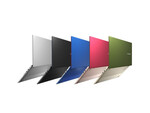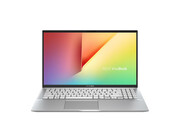Asus VivoBook S15 S531FL, i7-8565U
Specifications

Price comparison
Reviews for the Asus VivoBook S15 S531FL, i7-8565U
Source: Hitech Century
 Archive.org version
Archive.org versionSince their introduction awhile back, the Asus VivoBook range of notebooks have gained a solid reputation as well built workhorses that offer an excellent blend of performance at prices that won’t have you hocking an arm and a leg. Today, they’ve unleashed refreshed incarnations of their new VivoBook S14 S431 and VivoBook S15 S531 notebooks in Malaysia that come with upgraded hardware and enhanced design that make them look very tempting indeed.
Comparison, online available, Short, Date: 09/18/2019
Source: Unbox
 Archive.org version
Archive.org versionAt Php 59,995, the VivoBook S15 (S531) is priced competitively. Aside from being aesthetically pleasing with its modern looks and vast color choices, the VivoBook S15 (S531) is a performer with internals that can handle light-to-medium tasks like photo editing. The display may have brightness issues, but ASUS might be able to remedy it through a software update.
Single Review, online available, Long, Date: 09/11/2019
Source: Yugatech
 Archive.org version
Archive.org versionThe ASUS VivoBook S15 has an attractive body, slim bezels around the display, and a pretty good battery life. Performance-wise, it’s good enough for work and some casual gaming. However, the display itself is dim, and the colors are lacking in vibrancy, had limited viewing angles. The audio quality was rather average despite the Harman Kardon name. The display is one of a laptop’s most essential aspects, and it’s quite disappointing that the S15’s screen has several downsides to it. Still, if you’re looking for a sizeable laptop that has a unique color and has a slight weight to take around places, you might want to keep the ASUS VivoBook S15 in your choices.
Single Review, online available, Medium, Date: 08/31/2019
Source: Unbox
 Archive.org version
Archive.org versionYou have the same internals on the S531 compared to its predecessor: up to 8th-generation core i7 processor, up to 16GB RAM, and up to 512GB SSD and 1TB HDD (or a combination of both). For the S531, you get an upgrade on the GPU department with an MX250 discrete GPU.
Single Review, online available, Short, Date: 08/20/2019
Foreign Reviews
Source: Nghenhin Vietnam
 VN→EN Archive.org version
VN→EN Archive.org versionPositive: Beautiful design; nice display; decent hardware.
Comparison, online available, Medium, Date: 05/28/2019
Comment
NVIDIA GeForce MX250: Successor of the MX150 and still based on the same Pascal GP108 chip (similar to the desktop GT 1030) but with higher clock speeds. Available in two versions, a normal 25 Watt version and a low power version with 10 Watt TDP and reduced performance. The 25 Watt version e.g. offers a 21% higher boost clock than the old MX150 leading to a 5% performance gain.
Modern games should be playable with these graphics cards at low settings and resolutions. Casual gamers may be happy with these cards.
» Further information can be found in our Comparison of Mobile Graphics Cards and the corresponding Benchmark List.
Intel Core i7: The Intel Core i7 for laptops is based on the LG1156 Core i5/i7 CPU for desktops. The base clock speed of the CPUs is relatively low, but because of a huge Turbo mode, the cores can dynamically overclock to up to 3.2 GHz (920XM). Therefore, the CPU can be as fast as high clocked dual-core CPUs (using single threaded applications) but still offer the advantage of 4 cores. Because of the large TDP of 45 W / 55 W, the CPU is only intended for large laptops.
i7-8565U: Whiskey Lake based low power quad-core processor (technically identical to Kaby Lake but produced in a further improved 14nm++ process). The four cores are clocked between 1.8 and 4.6 GHz (Turbo Boost) and support HyperThreading.» Further information can be found in our Comparison of Mobile Processsors.












